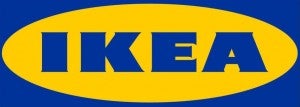 In January, the Indian government changed its policies to allow 100% foreign direct investment (FDI) in single-brand retail. It was a move of little consequence for global multi-brand retailers like Walmart and Carrefour who were waiting for the Indian market to open up. But some single-brand retailers are also having problems with the new policy.
In January, the Indian government changed its policies to allow 100% foreign direct investment (FDI) in single-brand retail. It was a move of little consequence for global multi-brand retailers like Walmart and Carrefour who were waiting for the Indian market to open up. But some single-brand retailers are also having problems with the new policy.
Swedish furniture-maker IKEA has been in the Indian market for some time — but not as a retailer. The company sources goods worth about US$600 million — mainly textiles and carpets — from India annually. At the June meeting of the St. Petersburg International Economic Forum, a leading international economic and business conference held annually in Russia, India’s commerce minister, Anand Sharma, met IKEA CEO Mikael Ohlsson and convinced him that the time was right to begin an Indian retail venture.
The commerce ministry subsequently announced plans by IKEA to invest in India “to the tune of US$750 million in the first stage and an additional estimated FDI of US$1.14 billion for establishment of 25 retail stores in a wholly-owned subsidiary.” At around US$1.9 billion, this is the biggest FDI in India in recent times. The only comparable investment is by Coca-Cola, which has unveiled plans to funnel another US$3 billion into India over the next eight years, taking its total investment in the country to US$5 billion.
Even Prime Minister Manmohan Singh used IKEA as evidence that India’s economy is not contracting. In an interview with the Hindustan Times, he said: “Coca-Cola announced [it will] invest $5 billion in India…. IKEA plans to invest a billion dollars. The pessimism in the media and the markets is far more than [the] reality. Consumer spending is holding up and this has not been affected by interest rates. The chairman of GE captured the picture correctly when he said, ‘The mood in the [stock] market is worse than the mood on the ground.’ I agree with that.”
But now the IKEA deal may be in jeopardy. The government’s policy statement from January says that “at least 30% of the value of products sold [by foreign investors] would have to be [sourced] from Indian small industries, village and cottage industries, artisans and craftsmen.” These “small industries” have been defined as having an investment in plant and machinery not exceeding US$1 million. If companies attract more business and upgrade or expand their facilities, the firms would fall out of the “small” bucket and foreign investors such as IKEA would have to find other suppliers to make up the 30%.
IKEA officials argue that any small Indian firm they partner with would naturally grow larger by virtue of the company’s relationship with the retailer. Secondly, the Swedish firm wants the 30% quota to be applicable on a 10-year basis, rather than annually. In other words, if IKEA fails to meet the required level in one year, it can make it up in later years.
The Indian government’s stance is that the focus on small industries is necessary to boost their growth. But quotas and restrictions have often led to unexpected developments. For example, in the pharma sector some large multinationals had executives set up small offshoot businesses in India to act as captive suppliers. The number of small offshoots increased rapidly because the businesses couldn’t grow beyond a point if they were to stay within the government’s definition of small. This in turn led to inefficiency.
IKEA officials say they are simply asking for clarifications. “We are waiting for the government to go through the approval process and respond to us,” company officials said in a statement.



